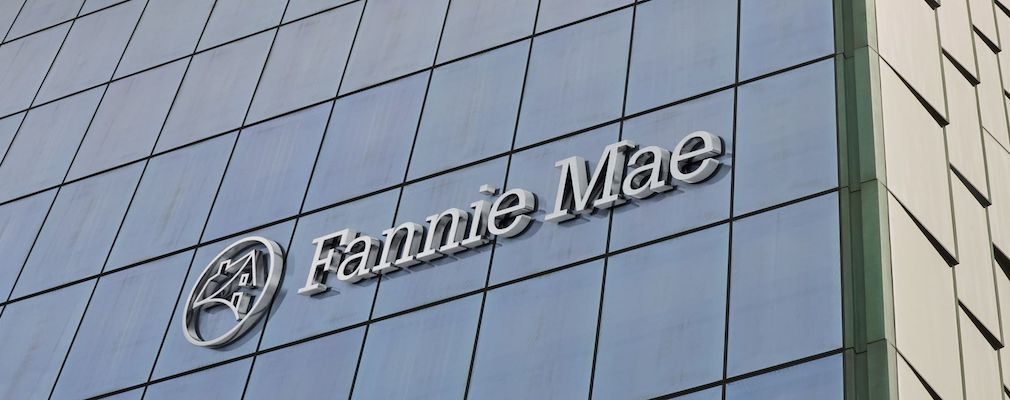It looks like those waiting with bated breath for the looming public offering of the government’s shares in Fannie Mae and Freddie Mac will have to wait until next year, at least.
Federal Housing Finance Agency Director Mark Calabria told members of the Credit Union National Association this week that he now expects the offering of stock in Fannie and Freddie to take place in 2021.
Calabria reiterated his previous sentiments that publicly offering stock in the government-sponsored enterprises will only happen when the companies have a sufficient financial base.
In recent years, the government has made several changes to the GSEs’ operating rules, allowing them to rebuild some capital. In 2017, the FHFA announced it would allow Fannie and Freddie to hold $3 billion to “cover other fluctuations in income in the normal course of each Enterprise’s business.”
Later that year, the GSEs officially withheld some of their profit and rebuilt a very small portion of their capital reserves.
Then, last year, the government allowed the GSEs to retain up to $45 billion in combined capital as they move towards exiting conservatorship.
Those moves have helped, according to Calabria, but they aren’t enough.
“Fannie and Freddie own or guarantee a combined $5.5 trillion in single and multifamily mortgages. That is nearly half of America’s residential mortgage market. But when I walked in the door at FHFA, they were limited to just $6 billion in allowable capital reserves. This put their combined leverage ratio at nearly a thousand to one,” Calabria said in his speech to the CUNA members.
“The danger this poses to taxpayers and our entire housing system cannot be overstated. Imagine if any of your credit unions operated at a thousand to one leverage. That would probably keep you up at night too,” Calabria continued.
It was that reason that the Department of the Treasury and the FHFA allowed Fannie and Freddie to keep up to $45 billion total in their reserves.
“As a result, their combined leverage ratio has greatly improved. Since I came into office, we have nearly quadrupled capital at the Enterprises. But it still stands at nearly two hundred and forty to one – roughly 20 times the average leverage of the institutions represented here today,” Calabria said.
“This is far less capital than Fannie and Freddie need to survive even a modest downturn,” Calabria added. “But we are moving in the right direction. And we will continue building on this foundation this year.”
Another step in increasing the GSEs’ capital will come via the FHFA’s capital rule. In 2018, the FHFA proposed a rule to implement new capital requirements for Fannie and Freddie.
But last year, the FHFA announced that it planned to do away with the 2018 rule and propose new capital rules, which Calabria states are coming later this year.
“FHFA’s capital rule will be a critical mile marker in our effort. It must be in place before Fannie and Freddie can go to the market to raise capital,” Calabria said. “I expect we will have re-proposed the capital rule very soon. Our goal is to publish the final rule by the end of 2020.”
If proposing the new capital rule happens as expected, that means there will likely be an offering of Fannie and Freddie stock in 2021, Calabria said.
“Based on this timeline, 2021 is the most likely target for an external capital raise by the Enterprises,” Calabria said, but added that the public offering is “process dependent, not calendar dependent.”
That means that it may not happen in 2021 after all, but Calabria’s current expectation is that the offering will happen next year.
But raising the GSEs’ capital isn’t just about preparing them for an offering, it’s also about making sure they can withstand an economic downturn, should one happen, Calabria said.
“The economy is strong today. But my job is to hope for the best and prepare for the worst,” Calabria said. “The question I ask myself every day is: Are Fannie and Freddie ready for a stressed housing market? Are they strong enough to support the market, in order for you to continue supporting your members?”
“Right now, the answer is no. In their current financial condition, Fannie and Freddie would fail in a downturn,” Calabria said.
“The lack of capital at Fannie and Freddie jeopardizes their important mission. It puts taxpayers at risk of absorbing their losses, as we saw with the bailouts after the last crisis. And it threatens every sector of our housing system, including credit unions,” Calabria continued. “This point is key: If Fannie and Freddie fail again, liquidity in the mortgage market will be impacted. This would hurt America’s credit unions and the communities you serve.”






